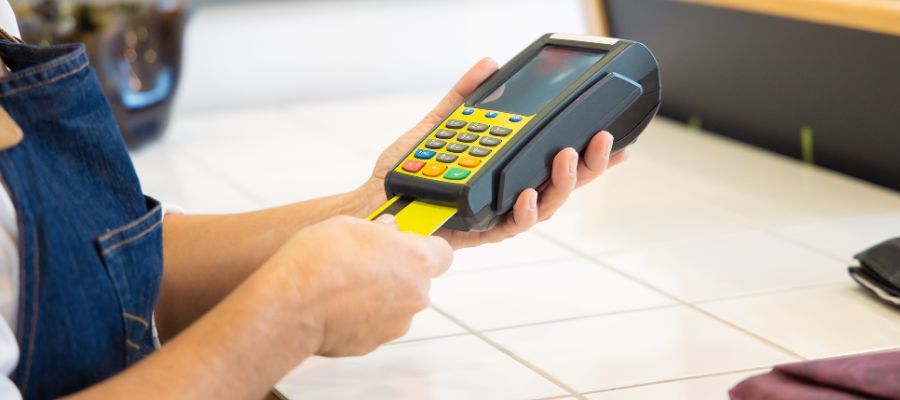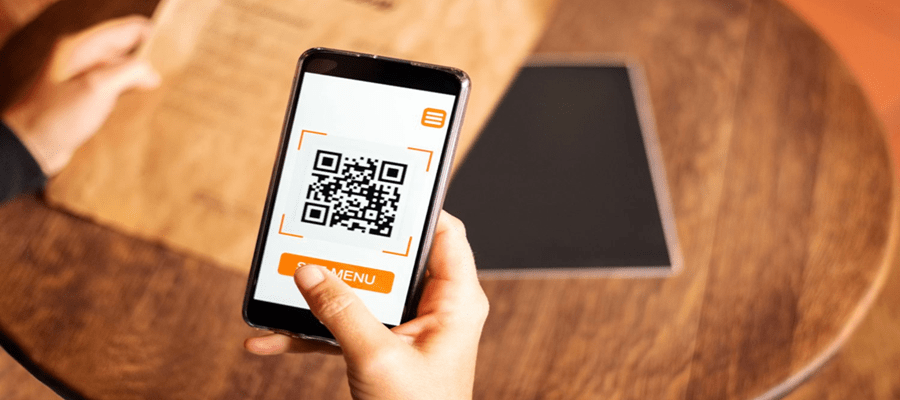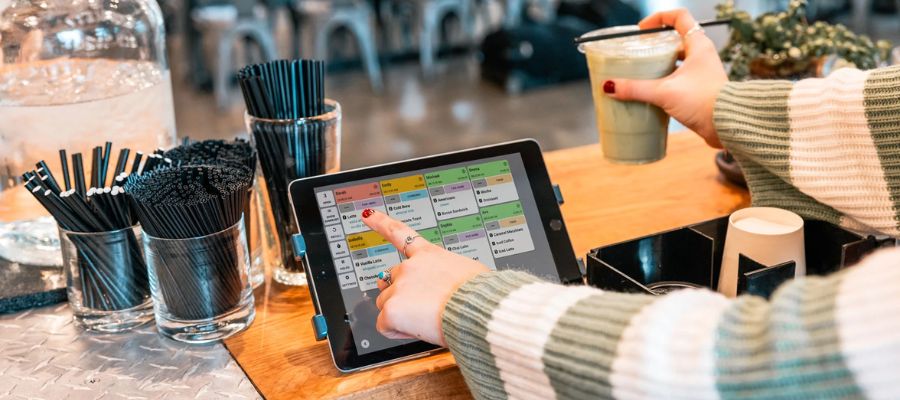
Tackling Fraud and Theft: POS Security Tips for 2025
This year, 2024, the retail technology grows with the threats. What was once a mainstream system of transactions now turns out to be the backbone of retail activities, as Point-of-Sale systems install safety measures and secure your business from fraud and theft. Cyber thugs employed advanced attacks while insiders also exploited the loopholes in a system to manipulate it- so securing your POS system can protect both your business and customer data.
So, how do retailers fortify their defences in this technopark of the world? Well, here are some important POS security tips for 2024 that will help you deal with fraud and theft most efficiently. How to Tackle Fraud and Theft Effectively in 2024 from Key Points on POS Security
1. Leap toward End-to-End Encryption
Digital transactions require keeping all data that are transmitted through your POS system safe. End-to-end encryption scrambles sensitive information from when it arrives in the system to the intended destination, thus protecting hackers from intercepting your clients' credit card numbers and other customers' information as well.
Moving into 2024, all businesses must ensure that all POS systems involved must have E2EE compliance. This is a direct investment that any small business or any big retailer may require by upgrading POS software which sustains encrypted transactions. Most modern POS systems are encrypted in-house but ensure that the system is not applying previous protocols.
Pro Tip: Keep updating on the latest encryption standards, and your best option is to choose any POS system with developed encryption tools.
2. Multi-Factor Authentication (MFA)
By far, the point of vulnerabilities in POS systems deals with employee logins. Cyber attackers frequently try to enter such a system by exploiting weak passwords or an unsecured login procedure. In 2024, one of the easiest ways of staying secure about this will be multi-factor authentication.
MFA brings access to your system only after a user, to get access has to present at least two types of verification (for example a password and a biometric scan or one-time code received on the mobile device). In other words, it's much harder to gain unauthorized entry into your POS system, no matter how bad guys hack into your account.
Pro Tip: Implement strong password policies, along with MFA. Require staff to make use of complex unique passwords, then frequently change them.
3. Software Updates and Patching
Just like any other software, POS systems are prone to bugs and security loopholes. Hackers often exploit such openings to take control of a system. To ensure that you are not a victim of such attacks, be sure that your POS software remains updated. Updates and patches solve security loopholes, strengthen the defence system in place, and maintain consistency with the standards set in the industry.
In 2024, POS system vendors will likely be rolling out more frequent updates to combat yet-to-be-realized forms of cyber threats. Retailers should emphasize point-of-sale system maintenance, including timely application of the updating measures when they first become available.
Pro Tip: Automatically update where feasible to avoid the pitfalls of manual intervention and ensure that patches are applied on time.
4. Control Employee Access and Use Role-Based Permissions
Not every employee needs to access every part of the POS system. In 2024, role-based access control will allow you to limit access to sensitive information and the functions of the system to an employee based on his function or role within the company. Cashiers need to see only transaction processing. Managers, on the other hand, may need deeper system access to run reports.
Limiting exposure to certain functionalities limits the opportunities for intentional as well as unintentional fraud. It also minimizes the opportunities for internal theft due to fewer employees having access to cash flow records and other sensitive information.
Recommendation: Regularly review employee permissions when their roles change or when they leave the company.
5. Monitor and Analyze Transactions for Abnormal Activities
POS systems capture massive amounts of transactional data that can be mined to point out unusual patterns. By 2024, data analytics, AI tools and techniques will be crucial in the defence against fraud. Some more specific kinds of patterns can include frequent refund transactions, perhaps customers voiding transactions, or transactions within hours when business does not happen during those periods.
Investing in fraud-detecting algorithms that are built directly into your POS systems also allows retailers to flag suspicious transactions as quickly as they happen. Businesses can better establish proactive steps to investigate and prevent potential theft or fraud from escalating.
Tip: Always check transaction logs and set up automated alerts about any out-of-the-ordinary activities.
6. Train Employees on Security Best Practices
Even though you might have the top advanced POS security in place, your employees remain your first line of defence. Train the staff on POS security, the reasons behind protecting customer data along with the means of identifying any potential threats. An educated workforce can often prevent security breaches from happening in the first instance.
In 2024, point-of-sale systems should be functional with regular training on secure handling of the system; awareness of phishing attempts, including how to question activities; and ensuring that the value of login credentials and system behavior anomalies are reported right away.
Pro Tip: Enforce frequent security drills or do mock phishing attacks to make your workers stay vigilant.
7. Implement Strong Anti-Virus and Anti-Malware Programs
POS system protection should include strong anti-virus and anti-malware software as malware will continuously evolve. Malware has been the commonest trigger element used to gain access to confidential data or otherwise remotely take control of a system. Probably, the biggest vulnerability of POS is malware infections, which can be spread by phishing emails, corrupted downloads from software sources, and compromised external devices such as USB drives.
Ensure that your POS system uses enterprise-grade security software, which can detect and neutralize a wide range of threats in real-time. Security tools for POS systems in 2024 have advanced to great levels; integrated security solutions combining antivirus, anti-malware, and firewall protection can be used as well for complete coverage.
Pro Tip: Arrange regular malware scans and do not ignore the warnings or alerts your security software puts out.
8. Firewall and Segmentation
Hackers often end up in the POS system by finding an entry point in a larger network that the POS system is connected to. So as a business, you should employ a firewall that will block unauthorized traffic in your network and also ensure segmentation of networks. Segmentation means you keep your exposure within minimum limits by separating your POS system from the other systems, for example, guest Wi-Fi, office networks, etc.
Segmentation of networks is one of the most effective methods for minimizing the risks of breaches against a POS in 2024. This is done by segregating your POS on its own, secure network; this way, should another part of your network become breached, attackers will not be able to move laterally through your infrastructure.
Pro Tip: If accessing your POS system from a remote location, consider using a VPN to further strengthen your access.
9. Regularly Conduct Security Audits
Conducting regular security audits will help you detect flaws in your POS system before hackers get a chance to exploit them. What an audit does is review every little detail of your POS hardware, software, access to employees, and transaction logs, tracing vulnerabilities and suspicious activity.
Businesses and others must have internal and external assessments made for the year 2024 and audited by certified security professionals. Regular audits will ensure your security is current, while risks identified can be addressed immediately.
Pro Tip: Consider scheduling a monthly or quarterly audit schedule to stay ahead of potential threats.
10. Ensure PCI Compliance
This is the Payment Card Industry Data Security Standard, a set of security standards aimed at ensuring the protection of cardholder data. Every business whose activity involves handling credit card transactions must be PCI DSS compliant or else would face very heavy fines, lawsuits, and reputational damage among other things.
In the year 2024 and as fraud advances, observance of the requirements of PCI DSS remains the only available option in the light of risk minimization regarding cardholder data theft. Ensuring your POS system is PCI compliant will thereby protect the payment information of your customers. It will position your business to not be held liable in case there is a breach.
Pro Tip: As a consultant, work hand in hand with your POS provider in confirming that your system is PCI DSS certified and is by the latest compliance standards.
Final Thoughts
Combating fraud and theft at the POS will ultimately be done by considering several fronts that protect your POS security in 2024. Whether it is comprehensive encryption, multi-factor authentication, employee training, or regular audits, securing your POS system is crucial for any retailer. Protect your business from costly breaches and the loss of valuable customers by staying ahead of changing threats and continuing to beef up your security measures.
Just as technology advances, tactics by cybercriminals will advance as well. Make 2024 the year you build up your defences and secure a safer, more secure environment for your business and its patrons.


